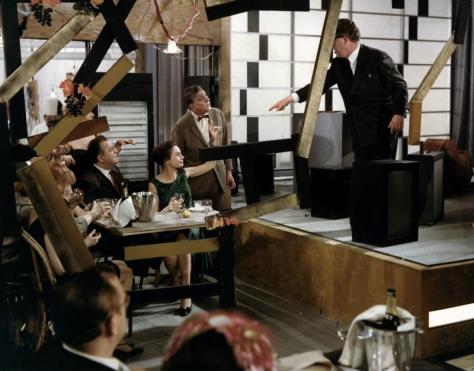
Format: Dual Format Blu-ray + DVD
Release date: 9 May 2011
Distributor: Arrow Video
Director: Jules Dassin
Writer: Jules Dassin
Original title: Du rififi chez les hommes
Cast: Jean Servais, Carl Mí¶hner, Robert Manuel, Jules Dassin, Magali Noí«l, Marcel Lupovici
France 1955
122 mins
Since Rififi is excellent and its excellence has been well recognised, critical assessment is probably otiose. Instead let me wonder what kind of film it is. It can be seen as an archetype of the genre now known as the heist movie (in this case, not so much ‘heist gone wrong’ as ‘heist gone right but…’). By many the film will be best remembered for the bravura 28-minute robbery sequence in which not a word is spoken. Stylistically the film seems influenced by a different genre, the American detective noir of the 30s and 40s. Rififi is no policier, however: the man who goes down these mean streets alone is not a detective but a criminal, and the police play only an incidental role. The genre which Rififi ultimately exemplifies is that of the showdown between rival criminals: trouble in the underworld. A close inspiration may have been Jacques Becker’s Touchez pas au grisbi, of the previous year.
The question of what the film is about leads to the question of its title. The British and American distributors gave up on translation and simply abbreviated it to Rififi. Slang of a past era is notoriously difficult to translate. Use slang from the same period for your translation and you risk making what was once vigorous and fresh seem quaint. Use more recent slang and the anachronism will jar. A bland English translation of Rififi would be ‘trouble’. Perhaps ‘rumble’ would make clearer the suggestion of conflict. But an extra layer of sexual innuendo is added by Magali Noí«l’s nightclub song about her relish for rififi with her man. So what would have been a good English equivalent? ‘Rough and tumble’? ‘Naughtiness’? Too jokey. If only I could think of some suggestive and cool-sounding phrase meaning ‘Trouble among the Men’ - but I can’t.
If the film has a theme it is something like ‘honour among thieves’. Overworked and scarcely plausible now is the idea that there is something to admire in the honour-based value system that supposedly governs (or more often fails to govern) the criminal world. But it is memorably embodied in the central character Tony ‘le Stephanois’, played by Jean Servais, his features impassive but still somehow expressive of pain and determination, his recurrent cough a sign that his cards are marked. The film is his, with associates and enemies falling to one side or the other as he drives the drama through each new development to its grim but fitting conclusion.
I think the key to Rififi is its vividness: the swiftness of exposition, the tellingness of the dialogue, the immediacy of the character portrayals. Perhaps these are all lessons learned from the economical ways of Hollywood noir, but add to this a more European visual imagination, meticulous care with choreography of the action and framing of shots, and a delight in the Parisian locations and atmosphere (distinctly pre-teenager, pre-Elvis, pre-Gainsbourg). Amazing that Jules Dassin, creator of this masterwork of French cinema, was in fact McCarthy refugee Julius Dassin of Middletown, Connecticut.
Available now in a miraculously sharp print to bring out its deep chiaroscuro aesthetic, Rififi‘s status as a seminal crime film is secure.
Peter Momtchiloff




